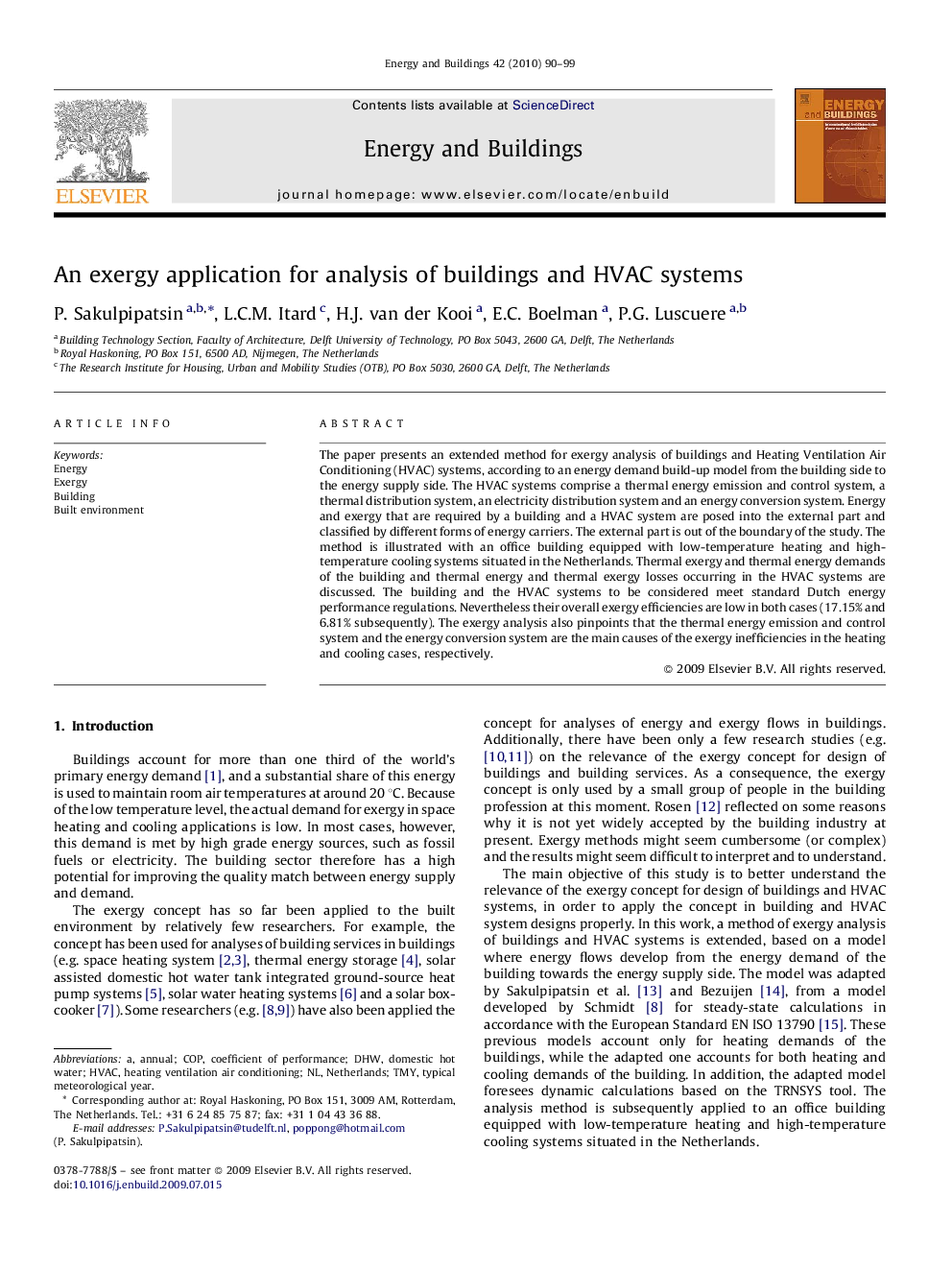| Article ID | Journal | Published Year | Pages | File Type |
|---|---|---|---|---|
| 265239 | Energy and Buildings | 2010 | 10 Pages |
The paper presents an extended method for exergy analysis of buildings and Heating Ventilation Air Conditioning (HVAC) systems, according to an energy demand build-up model from the building side to the energy supply side. The HVAC systems comprise a thermal energy emission and control system, a thermal distribution system, an electricity distribution system and an energy conversion system. Energy and exergy that are required by a building and a HVAC system are posed into the external part and classified by different forms of energy carriers. The external part is out of the boundary of the study. The method is illustrated with an office building equipped with low-temperature heating and high-temperature cooling systems situated in the Netherlands. Thermal exergy and thermal energy demands of the building and thermal energy and thermal exergy losses occurring in the HVAC systems are discussed. The building and the HVAC systems to be considered meet standard Dutch energy performance regulations. Nevertheless their overall exergy efficiencies are low in both cases (17.15% and 6.81% subsequently). The exergy analysis also pinpoints that the thermal energy emission and control system and the energy conversion system are the main causes of the exergy inefficiencies in the heating and cooling cases, respectively.
